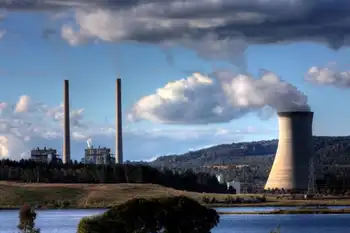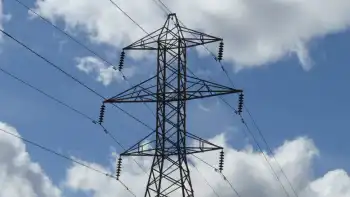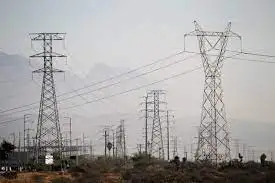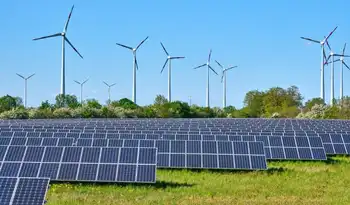AECL future hinges on Ontario deal
By The Globe and Mail
Protective Relay Training - Basic
Our customized live online or in‑person group training can be delivered to your staff at your location.

- Live Online
- 12 hours Instructor-led
- Group Training Available
If the nuclear agency loses the multi-billion-dollar contract to one of two global players, Ottawa would blame the McGuinty government for the nuclear agency's demise, according to sources.
The two governments - which have battled on several fronts - are engaged in a quiet game of chicken over Canada's flagship nuclear vendor and its network of Candu suppliers.
The Ontario government wants to be assured that Ottawa has a long-term commitment to the nuclear supplier before selecting its ACR1000 reactor, which is still under development. Ottawa, meanwhile, is considering selling the company, and the result of the highly competitive Ontario bid will be an important factor in its decision.
"The (Ontario) competition has accelerated for the feds the whole question of what they are going to do with AECL and the ACR1000 reactor," said Bryne Purchase, a former deputy energy minister in Ontario and now director of the energy and environment program at Queen's University.
"This is not just about selling a reactor in Canada, it's critical to AECL's plans to compete in the world."
AECL is competing with two much-larger foreign vendors, France's Areva Group, and U.S.-based Westinghouse Electric Co. LLC. Both those companies have access to commercial-type financing from their export credit agencies, and both have more prospects for sales than AECL, meaning they can spread development costs among more projects.
As a result, AECL and its partners, led by SNC-Lavalin Group Inc., have asked Ottawa to provide financing and risk-sharing in order to keep its costs competitive.
Last week, Natural Resources Minister Gary Lunn said the federal government stands behind AECL. In its most recent budget, the Harper government allocated $300-million to the Crown corporation to continue work on the ACR, and to refurbish its Chalk River research site. But some of AECL's Team Candu industry backers, which include Babcock & Wilcox Canada and GE Hitachi Nuclear Energy Canada, along with SNC-Lavalin Nuclear, worry that the Harper government is injecting just enough money into the company to prepare it for a sale, and to make a plausible - but not necessarily successful - run at the Ontario bid.
They fear Ottawa will balk at providing the required billions of dollars in loan guarantees, nor will it wish, as AECL's lone shareholder, to assume the financial risk for potential cost overruns the province will almost certainly demand.
AECL and its partners have acknowledged the critical nature of the Ontario decision for Team Candu. In a letter to Mr. Lunn obtained by The Globe and Mail, SNC-Lavalin Nuclear president Patrick Lamarre said an Ontario deal would be a "springboard to support our futures sales worldwide."
Based on AECL's past share of the global nuclear market, Mr. Lamarre said the consortium could generate $100-billion for the Canadian economy.
However, few people expect AECL to maintain its past market success, or match the heady prediction contained in its recently approved, five-year business plan that it will sell 25 reactors during the next 25 years, and four (including two in Ontario) during the next five years.
In 1996, AECL forecast that it would sell 10 reactors over 10 years. It sold three - two to China and one to Romania, in a deal that was resuscitated from one that had begun under former dictator Nicolae Ceausescu, and then was halted when his government collapsed.
AECL got some good news for its booming business of refurbishing aged Candus. Hydro-Québec announced a $1.5-billion rebuild of its Gentilly-2 nuclear reactor, which will be completed by the federal corporation.
Shawn-Patrick Stensil, an anti-nuclear campaigner for Greenpeace, said both levels of government appear to be looking to "outsource the blame" if AECL fails in Ontario and Ottawa decides to get out of the nuclear business.
"The feds will blame the province and the province will say, 'We heeded the advice of outside experts,' " he said. (Ontario has set up an evaluation committee that includes its two nuclear operators, Ontario Power Generation and privately owned Bruce Power.)
Since the Chinese and Romanian deals, AECL has been shut out of most promising markets, including the United States, which is itself heavily subsidizing the first few new reactors to be built in that country. Both Areva and General Electric Co. have expressed interest in buying AECL, which is prized for its existing reactor technology for smaller markets, its highly skilled work force, and its lucrative work in servicing Candu reactors around the world.
Despite its challenges, however, AECL isn't out of the game in Ontario. While the province has said cost and on-time deliverability are key factors, a third one is the promise of industrial benefits for the province, and the Crown corporation has a deep supplier base in the province to give it an advantage on that score.
At the same time, the province and the federal nuclear regulator have invested heavily in Candu know-how, and it will be costly to operate and regulate two different reactor systems.











